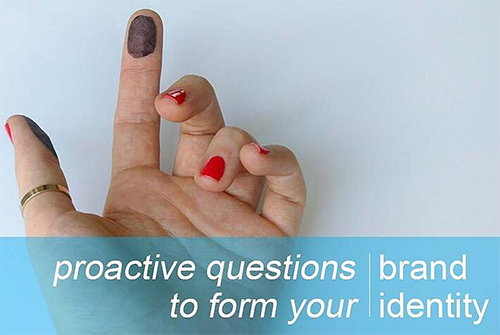If you’ve recently taken steps to launch a business, such as a clothing line, you may be anxious about your initial marketing efforts. Whether your concerns touch design, message or collateral such as custom business cards, having a memorable brand identity can be just as important as offering unique, fashionable, and well-made clothes — whether you’re targeting a small niche or high-end commercial audience.
Read on to learn more about the questions you’ll need to ask yourself to create a successful and trend-proof brand identity.
What questions should you be asking to form your brand identity?
Many of today’s consumers’ shopping decisions are driven by emotion and unconscious psychological factors, even if they pay attention to product prices and quality. In fact, up to 90 percent of snap judgments about products were found to be based on color alone.
“90% of snap judgments about products were found to be based on color alone.”
Asking a few preliminary questions before creating marketing materials can help you form a brand identity that is both true to your product line and the needs of the consumer.
Who are your target customers?
Determining and clearly defining your target customers can help you research age and demographic trends that will appeal to these groups. A number of studies exist showing exactly what consumers value most in their favorite brands. Consumers valued everything from reliability to an easy return policy.
Even subconscious things like phrases, colors, and logo designs can help you appeal to these desires.
Sometimes defining your target customers can involve a multi-step approach. For example, designing clothing for children will need to appeal both to them and to those who actually buy the clothing — whether mothers, fathers, grandparents, or family friends.
Who is your competition?
Unless you’re exploring an extremely niche market, like clothing for pet pigs, you’re likely to have some direct competitors in your market. You’ll need to study up on the competition. Then, determine how you can set yourself apart and secure a dedicated consumer base.
This may include capitalizing on a topical weakness. As an example, advertise your products as Made in the USA when you know your competitor engages in outsourcing. For another, offer free shipping or extended return policies when your competitor doesn’t.
You’ll also want to take a look at your competition’s visual marketing — from the colors used on their products to images used in their brochure design. Avoid marketing yourself in a too-similar manner. By using the same logo colors or a similar-sounding tag line could not only set you up for a trademark infringement lawsuit, it may backfire when it comes to getting or retaining new customers.
What kind of user experience do you want your customers to have?
With more and more consumers turning to their mobile devices for their buying needs, it’s important to use your brand identity to create a memorable consumer experience.
As an example, focus on easy buying and returning processes. Eliminate steps that lengthen the process of buying an item. Look at Amazon’s ‘One-Click’ purchase option. In connection with the buying process, provide a quick and clear process for returns, whether online or in-store.
Even if you decide not to offer robust shipping services, preferring a more traditional experience in-person visit, you’ll still need a website. In addition, online promotional channels (search and social promotion) will help inspire enough interest in your line to bring customers from outside your immediate geographic area.
By asking these three proactive questions at the start, your brand identity will gain much stronger recognition in less time and strengthen customer relations as your company grows.

